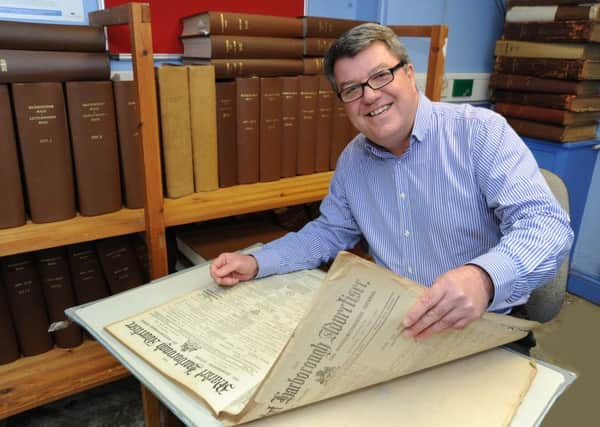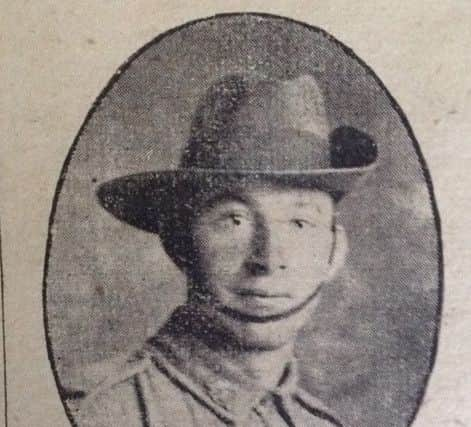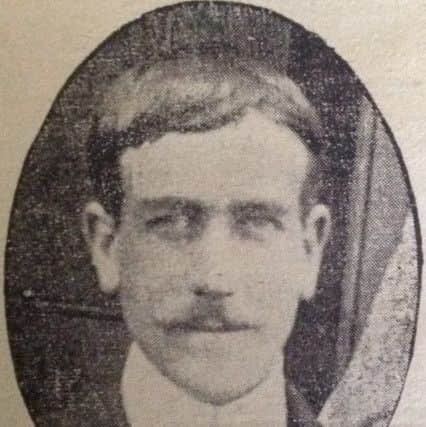John's WWI blog: Evocative report from the battlefront


William Howard Russell, who reported on The Charge of the Light Brigade in 1854, is often considered to be one of Britain’s greatest war correspondents.
His account for The Times is referred to by historians and academics as the beginning of a Golden Age of war reporting.
Advertisement
Hide AdAdvertisement
Hide AdBut his remarkable prose is rivalled in the February 15, 1916, edition of the Market Harborough Advertiser, by none other than a village soldier from Theddingworth, who references the great encounter of the Crimean War more than 60 years earlier in an evocative report from the battlefront in France.


Private Percy Tomlin describes his life as part of the Machine Gun Section of the 7th Northants Regiment – the locally renowned Mobbs’ Corps – where there is a long, straight road that has become his own ‘valley of death’.
It is only used at night says Private Tomlin, but even then it is full of danger as the Germans send up lights to illuminate the area.
“We just have to stand still until the light has gone,” says Private Tomlin. “I tell you it makes your hair stand up when these lights come up and you’re all the time expecting a tap.
Advertisement
Hide AdAdvertisement
Hide Ad“Talk about the ‘Light Brigade’, cannon to the right of them etc, we are right at the farthest point of a horse-shoe position, and we get fired at from all quarters, the same as the Light Brigade, only in addition we get bombs from above and mines from beneath.”


The journalist Russell was so acclaimed because of the reality of his reporting. One section of his report in The Times states: “At the distance of 1200 yards the whole line of the enemy belched forth, from thirty iron mouths, a flood of smoke and flame through which hissed the deadly balls. Their flight was marked by instant gaps in our ranks, the dead men and horses, by steeds flying wounded or riderless across the plain.”
There is a flamboyance to Russell’s words that Private Tomlin does not match. But the young Tommy paints as vivid a picture as the father of British war correspondents for the readers of the Advertiser sitting in their small town kitchens.
He says: “We have been in the hottest part of the British front and everybody has to have a touch there, but not for long. We have been extremely lucky, only a few casualties and only one from our section. He was hit in both ankles by a machine gun playing up and down the road.”
Advertisement
Hide AdAdvertisement
Hide AdNew technology also allows the Advertiser to out-do The Times of the mid-19th century. There are two photographs of Harborough men killed in action.


The Advertiser is, as usual, lagging behind the story but it is testament to the editorial staff that they are able to bring their readers the pictures at all.
One image is of Private J Gregory, whose death was reported in last week’s paper. The Little Bowden man, who left behind a wife and three children, had survived battle wounds only to be fatally injured when he fell from a train.
And there is also a photograph of Lance-Corporal J C Weston of Logan Street, Harborough, who was killed in action with the 27th Battalion Australian Imperial Force in November 1915.
Advertisement
Hide AdAdvertisement
Hide AdThe sad reports will feel even more poignant to the Advertiser’s readers as there is also news that the Military Service Act – conscription – is being rushed through parliament forcing all single men to enlist, forcing them – and their families – to face the kind of fates suffered by Private Gregory, Lance-Corporal Weston and the scores of other Harborough soldiers killed during the conflict.